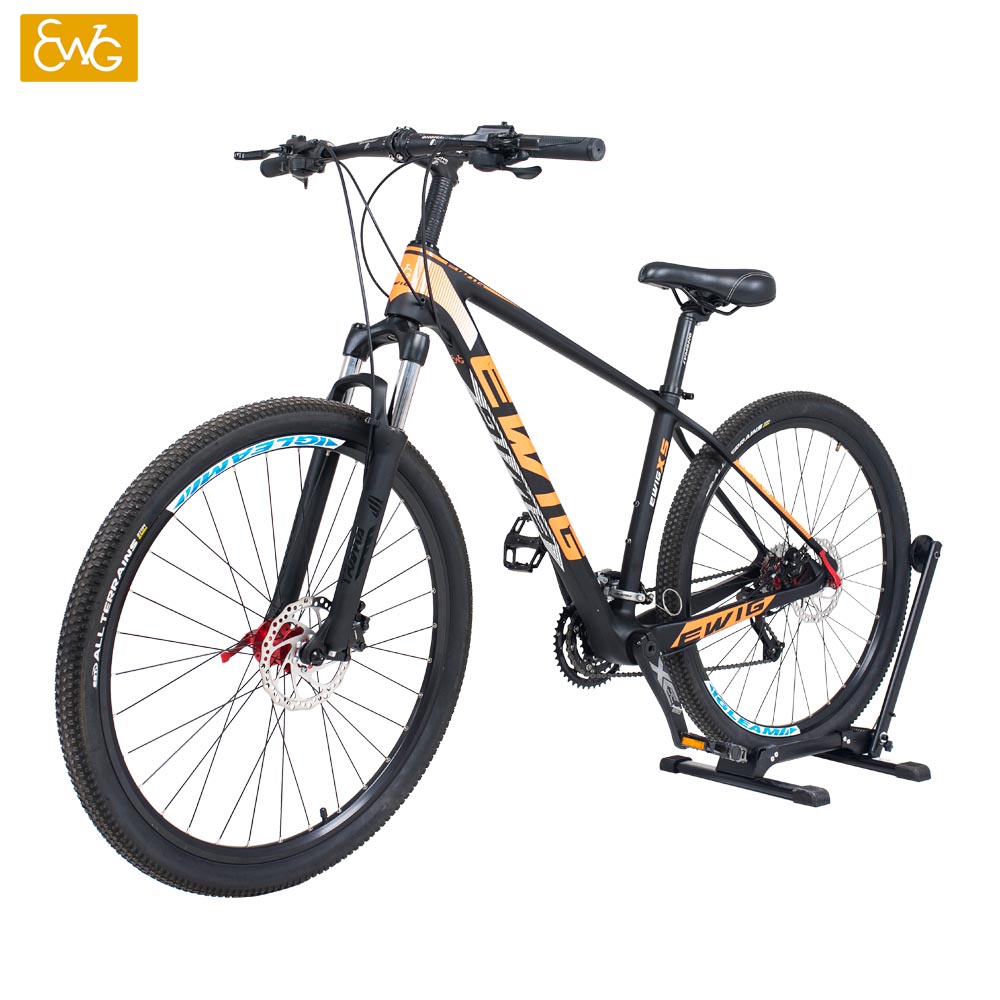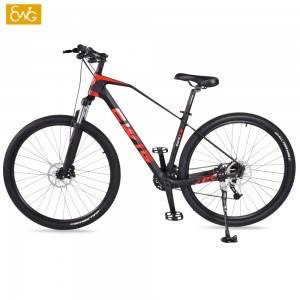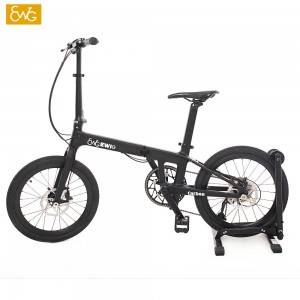There are a number of ways to turn those raw ingredients of carbon fibre and resin into a bike frame. While there are a few niche players with unconventional techniques, the vast majority of the industry have adopted the monocoque method.
Monocoque manufacturing :
A term commonly used to describe modern carbon fibre bicycle frames, monocoque design effectively means the item handles its loads and forces through its single skin. In reality, true monocoque road bike frames are extremely rare, and the majority of what is seen in cycling only feature a monocoque front triangle, with the seatstays and chainstays produced separately and later bonded together. These, once built into a complete frame, are more correctly termed a semi-monocoque, or modular monocoque, structure. This the technique used by Allied Cycle Works, and is far and away the most common in the bicycle industry.
Regardless of whether the industry’s terminology is correct, typically the first steps see large sheets of pre-preg carbon cut into individual pieces, each of which are placed in a specific orientation within a mould. In the case of Allied Cycle Works, the specific choice of carbon, the layup, and orientation all go together in a ply manual, otherwise known as layup schedule. This specifically outlines exactly what pieces of pre-preg carbon go where within the mould. Think of it as a jigsaw puzzle, where every piece is numbered.
Carbon fibre frame bikes are often perceived as being cheap and easy to manufacture, but the reality is that this layering process is extremely time-consuming and expensive.The way the plies lay on to another aids in how they unfurl into the mould when the resin viscosity drops.The easier they can slide and fill the tool, the better consolidation you get. Pre-form size is just ensuring that the plies don’t need to move a long way to get to their final shape.
Made to be model- and size-specific, the mould dictates the outside surface and shape of the frame. These moulds are typically machined of either steel or aluminium, built for repeated use and without variance.
A finished frame
All said and done, creating a carbon frame is a time consuming process, and one that remains surprisingly hands-on. For a material with so much versatility in its usage, there’s no doubt the devil is in the detail – especially when it comes to creating something that’s equally light, strong, compliant, and safe.From afar, not much has changed in the making of carbon bikes over the years. However, look deeper, and you’ll see the finer understanding of the material application and improved quality control has led to a product that’s superior to what was available in years past. No matter what aesthetic shape a frame takes, it’s safe to say that carbon fibre’s true performance lies well below the surface.
How long will a carbon bike frame last?
Carbon Fiber bike frames have grown in popularity over the last few years. Not only are they more lightweight, but they are also said to be the strongest material available.
This added strength comes in handy on the trail but can also help extend the life of your bike overall, but how long do carbon bike frames last?
Unless they are damaged or poorly built, carbon frame bike can last indefinitely. Most manufacturers still recommend that you replace the frame after 6-7 years, however, carbon frames are so strong that they often outlast their riders.
To help give you a better understanding of what to expect, I will breakdown some of the factors that affect how long they last, as well as what you can do to help them last longer.
Quality of Carbon Fiber
Carbon Fiber has virtually no shelf life and it doesn’t rust like the metals used on most bikes.
most people don’t know that carbon fiber comes in 4 different tiers – and each one has different properties that can determine how long you can expect them to last.
The 4 tiers of carbon fiber used on bikes are; standard modulus, intermediate modulus, high modulus and ultra-high modulus.As you go up the tiers, the quality and price of the carbon fiber improves but not always the strength.
Carbon Fiber is graded by its Modulus and Tensile strength.Modulus basically means how stiff the carbon fiber is and is measured in Gigapascals, or Gpa. Tensile Strength represents how far the carbon fiber can stretch before fracturing and is basically a measure of how much it can take before breaking. Tensile Strength is measured in Megapascals, or Mpa.
As you can see from the chart above, the Ultra-high Modulus provides the stiffest experience but Intermediate Modulus provides the strongest material.
Depending on how and what you ride, you can expect the bike frame to last accordingly.
While the higher-grade carbon fiber may last longer in perfect conditions, you may get more life out of a carbon bike frame made from Intermediate Modulus due to how strong it is
Quality of Resin
In fact, the carbon fiber is actually what holds the resin in place, creating a stiff and solid structure that is a carbon bike frame. Naturally, how long a carbon bike frame lasts depends not only on the carbon fiber but also on the quality of the resin holding everything together.
Protective Measures
how long a carbon bike frame lasts depends on the protective measures that were put in place during manufacturing.
The UV-rays from the Sun can damage just about any material with prolonged exposure. To combat this, most bike manufacturers use a uv-resistant paint and/or wax to protect the bike frame.
A carbon fibre bike is often seen as using the dream material for a mountain bike. When well-produced, it's light, stiff and it can be moulded into any shape.Carbon is pretty much the number one material of choice when it comes to mainstream frame construction
Learn more about Ewig products
Post time: Jun-16-2021





